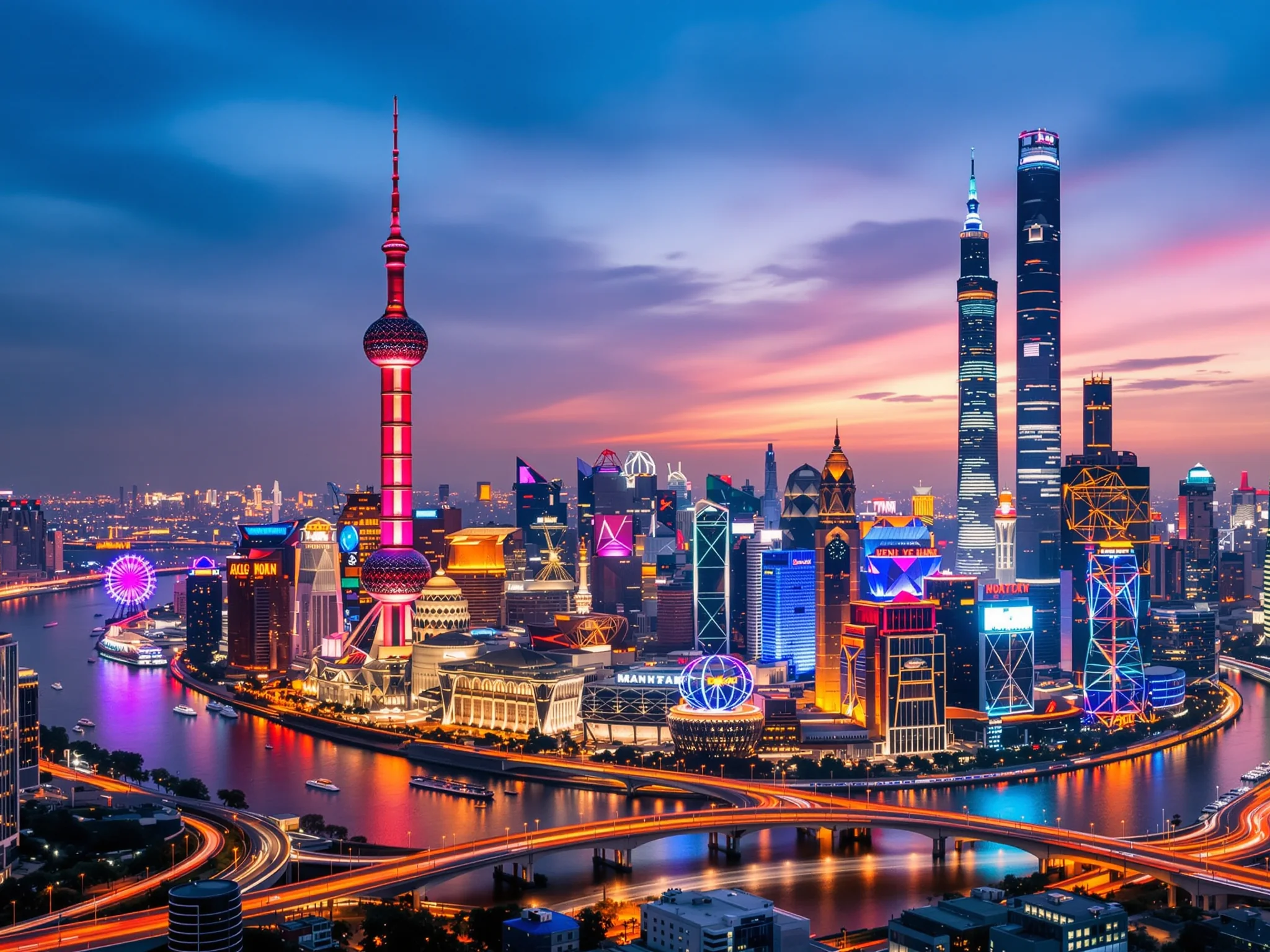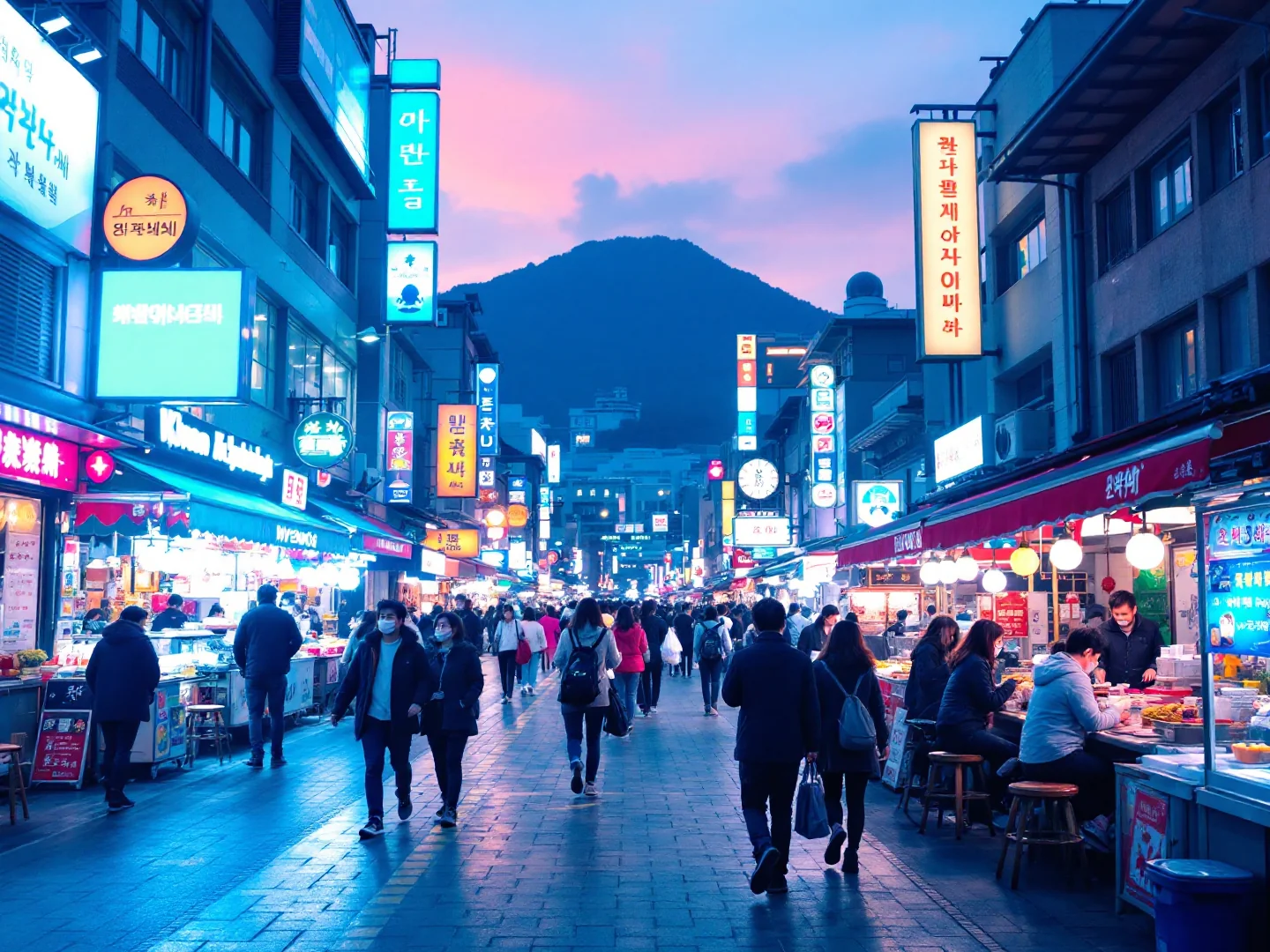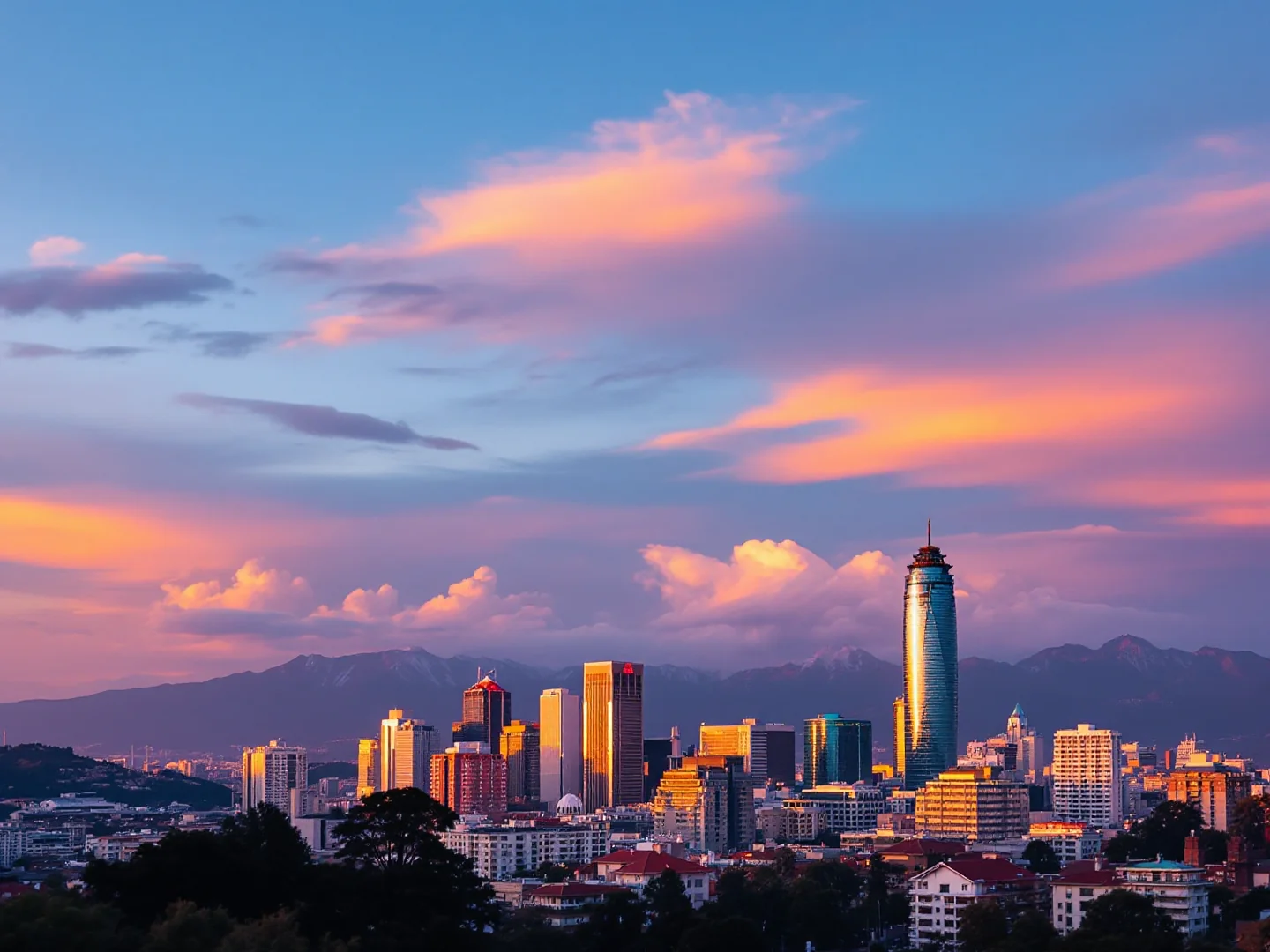Why Visit Tokyo?
Tokyo mesmerizes as a city of fascinating contradictions, where serene ancient temples stand in the shadow of neon-lit skyscrapers and centuries-old traditions coexist with bleeding-edge technology. Japan's sprawling capital offers distinct worlds within its 23 wards: Shibuya's famous scramble crossing where thousands cross in perfect synchronization, Harajuku's kawaii fashion and youth culture, and Shinjuku's towering business district transforming into izakaya alley nightlife. Yet step into Asakusa and time rewinds at Senso-ji Temple's incense-filled halls and traditional Nakamise shopping street.
Tokyo's culinary scene reigns supreme with more Michelin stars than any city—from intimate sushi counters at Tsukiji Outer Market to steaming bowls of perfect ramen in tiny shops and elegant kaiseki multi-course dinners. Cherry blossom season (late March-early April) paints parks pink, while autumn (November) brings fiery maple colors to temple gardens. Technology enthusiasts geek out in Akihabara's electronics paradise, anime fans pilgrimage to Nakano Broadway, and fashionistas browse Omotesando's flagship stores.
The city's efficiency amazes: trains run to the second, vending machines dispense everything, and cleanliness standards approach perfection. Day trips reach Mount Fuji, while Tokyo's own Tokyo Skytree and Shibuya Sky offer skyscraper panoramas. With safe streets, impeccable public transport, spring and autumn mild seasons, and a politeness that welcomes respectful visitors, Tokyo delivers cultural immersion, culinary excellence, and technological wonder in the world's most populous metropolitan area.
What to Do
Traditional Tokyo
Senso-ji Temple & Asakusa
Tokyo's oldest temple (founded 628 AD). Main hall is open 6am–5pm; outer temple grounds and Kaminarimon gate are accessible 24 hours. Visit before 9am or after 5pm to avoid tour groups. Walk through Nakamise shopping street for traditional snacks and souvenirs. Free entry; fortune slips (omikuji) cost ¥100.
Meiji Shrine & Yoyogi Park
Peaceful Shinto shrine in forested grounds near Harajuku. Free entry, open sunrise to sunset. Early morning (7–9am) is most serene. Walk through the massive torii gate and watch for wedding processions on weekends. Adjacent Yoyogi Park is perfect for people-watching and Sunday performers.
Imperial Palace East Gardens
Free entry to the only public part of Imperial Palace grounds (closed Mon/Fri). Beautiful Japanese gardens with remains of Edo Castle. Go spring for cherry blossoms or autumn for maple colors. Main palace itself requires advance tour booking (free but limited slots).
Modern Tokyo
Shibuya Crossing & Hachiko
World's busiest pedestrian crossing—up to 3,000 people cross at once. Best view from Starbucks 2nd floor (arrive 30 min early for window seats) or Magnet rooftop (free). Visit Hachiko statue by the station—meeting spot and photo op. Evening (6–8pm) is most crowded and photogenic.
Shinjuku & Tokyo Metropolitan Building
Free observation decks (45th floor, 202m high) in Tokyo government building—better views than paid towers. Open about 9:30–22:00 (last entry around 21:30); one tower open at night on alternating days—check the schedule. Explore Shinjuku's Golden Gai afterwards—tiny bars in alleyways (cover charge ¥500-1000).
Akihabara Electric Town
Anime, manga, and electronics district. Multi-story arcades, maid cafes (expect ¥1000+ cover), and duty-free electronics. Yodobashi Camera is massive; Mandarake for vintage anime goods. Evening is busiest. Not everyone's scene—skip if you're not into otaku culture.
TeamLab Borderless or Planets
Immersive digital art museums—book online weeks ahead (¥3,800). Borderless is more exploratory; Planets has water rooms (wear shorts). Go on weekdays or last entry time slot. Takes 1.5–2 hours. Incredibly Instagram-worthy but very crowded.
Tokyo Food & Local Life
Tsukiji Outer Market
Original tuna auction moved to Toyosu, but outer market remains with street food and shops. Visit morning until early afternoon for fresh sushi breakfast (¥2000-4000) and grilled seafood skewers. Try tamagoyaki (sweet omelet) at stalls. Very touristy but authentic food.
Harajuku & Takeshita Street
Youth fashion and cosplay central. Takeshita Street has crepe stands (¥600), quirky shops, and crowds (worst on weekends). Walk to quieter Omotesando for high-end shopping. Best people-watching is Sunday in Yoyogi Park nearby where rockabilly dancers and cosplayers gather.
Ramen & Izakaya Districts
Tokyo has 1000s of excellent ramen shops—try Ichiran (solo booths, English menu) or Ippudo chain. Izakaya (Japanese pubs) serve small plates with drinks—Omoide Yokocho (Shinjuku) has tiny yakitori stalls. Use food ticket machines; most places are cash only. Tipping isn't done.
Gallery
Travel Information
Getting There
- Airports: HND, NRT
Best Time to Visit
March, April, October, November
Climate: Moderate
Weather by Month
| Month | High | Low | Rainy days | Condition |
|---|---|---|---|---|
| January | 10°C | 2°C | 12 | Good |
| February | 11°C | 2°C | 7 | Good |
| March | 14°C | 4°C | 12 | Excellent (best) |
| April | 16°C | 7°C | 12 | Excellent (best) |
| May | 23°C | 15°C | 10 | Good |
| June | 26°C | 19°C | 17 | Wet |
| July | 27°C | 22°C | 30 | Wet |
| August | 33°C | 25°C | 11 | Good |
| September | 27°C | 21°C | 21 | Wet |
| October | 20°C | 13°C | 13 | Excellent (best) |
| November | 17°C | 8°C | 7 | Excellent (best) |
| December | 11°C | 2°C | 4 | Good |
Weather data: Open-Meteo Archive (2020-2024) • Open-Meteo.com (CC BY 4.0) • Historical avg. 2020–2024
Budget
Excludes flights
Visa Requirements
Visa-free for EU citizens
💡 🌍 Traveler Tip (November 2025): November 2025 is perfect for visiting Tokyo!
Practical Information
Getting There
Narita Airport (NRT) is 60km east—Narita Express train to Tokyo/Shinjuku costs ¥3,000-3,500 ($21–$25), 60-90 min. Cheaper Keisei Skyliner to Ueno ¥2,500 ($17), 45 min. Haneda Airport (HND) is closer—Tokyo Monorail or Keikyu Line ¥500-700 ($3–$5), 30 min. Both have limousine buses. A 7-day Ordinary JR Pass is now around ¥50,000 via overseas agents (more if bought in Japan). It only makes sense if you're doing multiple long-distance rail trips—you don't need it just for Tokyo.
Getting Around
Tokyo's trains and Metro are world-class but complex. Get a Suica or Pasmo IC card (¥2,000/$14 deposit+credit) for seamless tap-on/tap-off on all trains, buses, and even vending machines. JR Yamanote Line circles major areas. Day passes exist but IC cards are easier. Taxis are expensive (¥800/$5 start). Tokyo is walkable within neighborhoods. Biking is common for locals but challenging for visitors in traffic.
Money & Payments
Japanese Yen (¥, JPY). Exchange $1 ≈ ¥$155–$1651 ≈ ¥145-155. Japan is still cash-heavy—many small restaurants, temples, and shops don't accept cards. Withdraw from 7-Eleven/FamilyMart ATMs (international cards work). Credit cards accepted at hotels, department stores, and chains. Tipping is not practiced and can offend—service is included.
Language
Japanese is official. English signage in major stations and tourist areas, but locals' English proficiency varies (better among youth). Download Google Translate with offline Japanese. Learn basic phrases (Arigatou gozaimasu = thank you, Sumimasen = excuse me). Pointing at pictures on menus works. Japanese are patient with tourists.
Cultural Tips
Bow slightly when greeting. Remove shoes when entering homes, temples, ryokan, and some restaurants (look for shoe racks). Don't eat while walking—stand aside or sit. Quiet on trains—no phone calls. Tattoos may bar onsen/bathhouse entry. Wait for trains to empty before boarding. Trash cans are rare—carry trash with you. Chopstick etiquette: don't stick upright in rice or pass food chopstick-to-chopstick. Temples: wash hands at purification fountain, bow twice/clap twice/bow once. Punctuality is sacred.
Perfect 3-Day Tokyo Itinerary
Day 1: Modern Tokyo
Day 2: Traditional Tokyo
Day 3: Culture & Nature
Where to Stay in Tokyo
Shibuya
Best for: Youth culture, shopping, famous crossing, nightlife, trendy vibes
Asakusa
Best for: Traditional temples, old Tokyo atmosphere, rickshaws, souvenirs
Shinjuku
Best for: Skyscrapers, nightlife, Golden Gai bars, government building views
Harajuku
Best for: Fashion, youth culture, Takeshita Street, Meiji Shrine, crepes
Frequently Asked Questions
Do I need a visa to visit Tokyo?
What is the best time to visit Tokyo?
How much does a trip to Tokyo cost per day?
Is Tokyo safe for tourists?
What are the must-see attractions in Tokyo?
Popular Activities
Top-rated tours and experiences in Tokyo
Ready to Visit Tokyo?
Book your flights, accommodation, and activities






